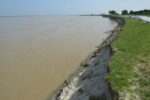The just-concluded United Nations Summit of the Future in New York, and next year’s Second World Summit for Social Development, aim to “chart a path toward achieving the Sustainable Development Goals (SDGs) and responding to emerging challenges and opportunities.”
But the question of how to finance the necessary investments – particularly at a time when many countries are weighed down by debt – stalks global discussions.
The world is more complicated than it was a decade ago, when the 2030 Agenda for Sustainable Development, which sets out the 17 SDGs and their 169 targets, was drafted.
When the Agenda was approved in January 2016, we had not yet faced the COVID-19 pandemic, war had not engulfed Ukraine or Gaza, and the United States and China were not at loggerheads.
Today, the world economy is more fragmented, geopolitical tensions are higher, and multilateralism is sputtering.
So far, multilateral development banks have taken the lead on this front. As a recent OECD report shows, in 2012-20, outflows from the World Bank Group increased by 72%, and outflows from other MDBs soared by 155%. In 2021-22, total MDB outflows rose by another 22%.
Moreover, the number of people living in poverty has increased: in 2020-23, an estimated 165 million people, mostly in developing countries, fell below the World Bank’s poverty line ($3.65 per day at purchasing power parity).
Meanwhile, many countries’ debt burdens have become less manageable, after governments were forced to increase public spending in response to the pandemic and the subsequent cost-of-living crisis.
Today, only 27 developing countries – 18% of the total – are not burdened with excessive debt.
The rest are struggling with debt overhang, which undermines economic growth and development, and raises the risk of an eventual default.
The International Monetary Fund estimates the debt-burden threshold for low-income countries is between 35% and 70% of GDP, after which debt can become unmanageable.
When debt-servicing costs are high, countries often end up making big sacrifices to stay solvent. For example, they might tap foreign-exchange reserves, thereby weakening their ability to respond to future crises, or reallocate resources from critical areas – such as education, health, and social protection – to keep up with their payments.
In low-income countries, interest payments are now 2.3 times larger than spending on social assistance, and 1.4 times larger than domestic health expenditures, on average. They amount to 60% of spending on education.
A country that is reducing social spending to service its debts – despite the increase in poverty that will inevitably follow – is unlikely to be able to make long-term investments in sustainable development.
And yet, as the UN and other multilateral organizations have made clear, a significant increase in financing, at both the national and international levels, is a prerequisite for achieving the SDGs by the 2030 deadline.
Thus, it is urgent to offer relief to countries that face debt distress.
Governments should not have to choose between servicing their debts and taking care of their citizens, and today’s debts should not act as a drag on the future.
Countries’ ability to manage their debt should be assessed against a broader range of indicators – human, social, and environmental, not just financial.
Where debt relief, debt restructuring, or both is in order, it must be implemented quickly and efficiently as part of a comprehensive debt-management strategy, possibly making use of instruments like debt-for-climate swaps, which commit the debtor government to invest the savings from debt relief in climate adaptation or mitigation.
And policy measures must be coordinated at the international level. Otherwise, we stand little chance of achieving the SDGs by the 2030 deadline, with devastating consequences for people and the planet.
But debt relief alone is not enough. If developing countries are to achieve the SDGs, they will need new sources of funding.
So far, multilateral development banks have taken the lead on this front. As a recent OECD report shows, in 2012-20, outflows from the World Bank Group increased by 72%, and outflows from other MDBs soared by 155%. In 2021-22, total MDB outflows rose by another 22%.
This trend is set to continue. Earlier this year, ten MDBs estimated that they could collectively expand their lending headroom by an additional $300-400 billion over the next decade. But this would mean an increase of just $40 billion more per year – far less than the $260 billion per year that the G20 Independent Expert Group estimates will be needed to meet the SDGs.
To address the sustainable-development imperative, the MDBs will have to persuade their member states to increase their own contributions by amounts proportionate to the scale of the challenges ahead.
Other multilateral organizations, such as the UN, as well as non-governmental donors and the private sector, must also ramp up their support.
Multilateral efforts should aim both to tackle existing debt and to expand access to affordable finance in the future, using a variety of instruments, including concessional loans, green and blue bonds, and grants.
And policy measures must be coordinated at the international level. Otherwise, we stand little chance of achieving the SDGs by the 2030 deadline, with devastating consequences for people and the planet.
(Paola Subacchi is Professor of Political Economy and incoming Chair in Sovereign Debt and Finance at Sciences Po)









Comment